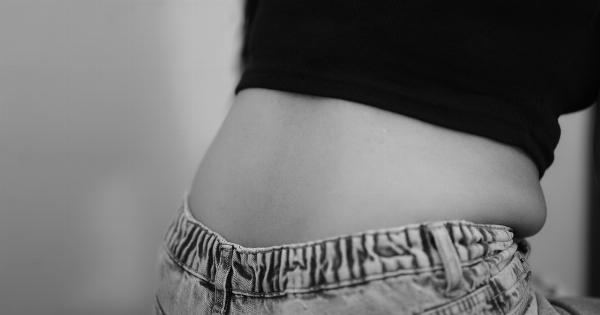Menopause is a natural stage of a women’s life that marks the end of her reproductive years when the ovaries stop producing eggs.
This change is often accompanied by a range of uncomfortable symptoms, including hot flashes, night sweats, mood swings, and vaginal dryness, urinary leakage or incontinence is one of the most common symptoms of menopause.
What is Urinary Leakage?
Urinary leakage is also known as incontinence or the involuntary leakage of urine. It means that a woman is unable to control her bladder, and urine is released without warning. There are various types of urinary incontinence, including:.
Stress Incontinence
Stress incontinence is the most common type of incontinence that affects women during menopause. This is usually caused by the weakening of the pelvic floor muscles that support the bladder, urethra, and uterus.
Any activity that puts pressure on the pelvic muscles, such as coughing, sneezing, laughing, or lifting heavy objects can cause urine to leak.
Urge Incontinence
Urge incontinence is caused by involuntary contractions of the bladder muscles that lead to a sudden urge to urinate.
A woman may feel the urge to go to the bathroom frequently, even when the bladder is not full, resulting in the sudden leakage of urine.
Overflow Incontinence
Overflow incontinence is characterized by a constant dribble of urine due to the bladder being overly full. This can happen when the bladder doesn’t empty completely or when there’s an obstruction that prevents urine from flowing normally.
Post-Menopausal Atrophic Vaginitis
Post-menopausal atrophic vaginitis is another common condition that women experience after menopause. It occurs due to the decline in estrogen levels in the body, which leads to inflammation, dryness, and thinning of the vaginal lining.
This condition can cause discomfort, pain, and burning during sexual intercourse and increase the risk of urinary leakage and other infections.
Causes of Urinary Leakage during Menopause
Urinary leakage during menopause is often caused by multiple factors, including:.
- The weakening of pelvic floor muscles due to decreasing estrogen levels
- Weight gain and abdominal fat distribution that puts pressure on the bladder
- Chronic coughing due to respiratory problems
- Pregnancy and childbirth that can result in the stretching of pelvic muscles
- Underlying medical conditions such as diabetes and multiple sclerosis
- Surgery such as hysterectomy, prostatectomy, or pelvic organ prolapse repair that can damage pelvic floor muscles or nerves
- The consumption of caffeine, alcohol, and spicy or acidic foods that irritate the bladder
- Constipation that can put pressure on the bladder and pelvic muscles
How to Manage Urinary Leakage during Menopause
Although urinary leakage during menopause can be inconvenient and embarrassing, there are various ways to manage it effectively, including:.
Lifestyle Changes
One of the most effective ways to manage urinary leakage during menopause is to make healthy lifestyle changes that can strengthen the pelvic muscles, improve bladder control, and reduce the risk of irritation and inflammation. These changes include:.
- Doing regular pelvic floor exercises or kegel exercises that can strengthen the muscles that support the bladder, vaginal, and rectum.
- Keeping a healthy weight to reduce the pressure on the bladder and pelvic muscles.
- Drinking enough fluids to avoid dehydration, but avoid caffeine, alcohol, and other bladder irritants.
- Eating a well-balanced diet that includes fiber-rich foods to avoid constipation.
- Avoiding smoking and tobacco products that can weaken the bladder muscles and increase the risk of infections.
Behavioral Techniques
Some behavioral techniques can also help manage urinary leakage during menopause, including:.
- Timed urination, where a woman schedules toilet breaks to empty the bladder before any potential urine leakage.
- Double Voiding, where a woman tries to empty the bladder twice to ensure that it’s completely empty.
- Biofeedback training, where a woman learns how to use sensory feedback to recognize and control the pelvic muscles’ contractions.
Medical Treatments
There are various medical treatments available that can help manage urinary leakage during menopause, including:.
- Estrogen therapy, which can help restore the vaginal lining’s thickness and elasticity, that can reduce the risk of urinary leakage.
- Medications such as anticholinergic drugs or mirabegron that can control bladder contractions and reduce the urge to urinate.
- Surgery such as sling procedures or bladder neck suspension, where a mesh is implanted under the urethra or bladder neck to support the pelvic muscles and improve bladder control.
Conclusion
Urinary leakage during menopause is a common problem that can affect a woman’s quality of life. Although it can be embarrassing, various treatments can effectively manage this condition.
It’s important to talk to a healthcare provider to determine the underlying cause of urinary leakage and the most appropriate treatment option. With the right treatment and management strategies, women can enjoy a happy, active, and comfortable life during menopause and beyond.


























